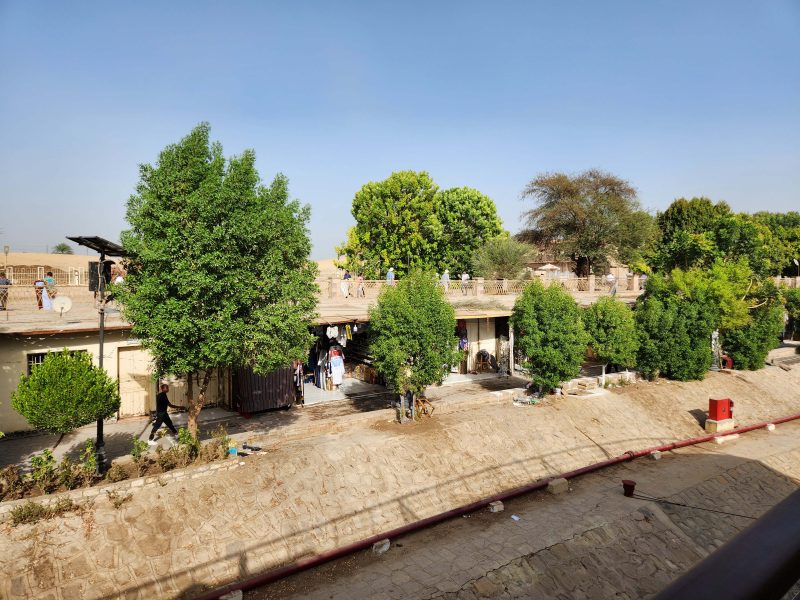Our Nile River cruise excursion today took us to the Aswan High Dam, one of the top 10 dams in the world. As we went from place to place in Egypt, it was nice to see lots of beautifully colorful bougainvillea along the road on our routes.
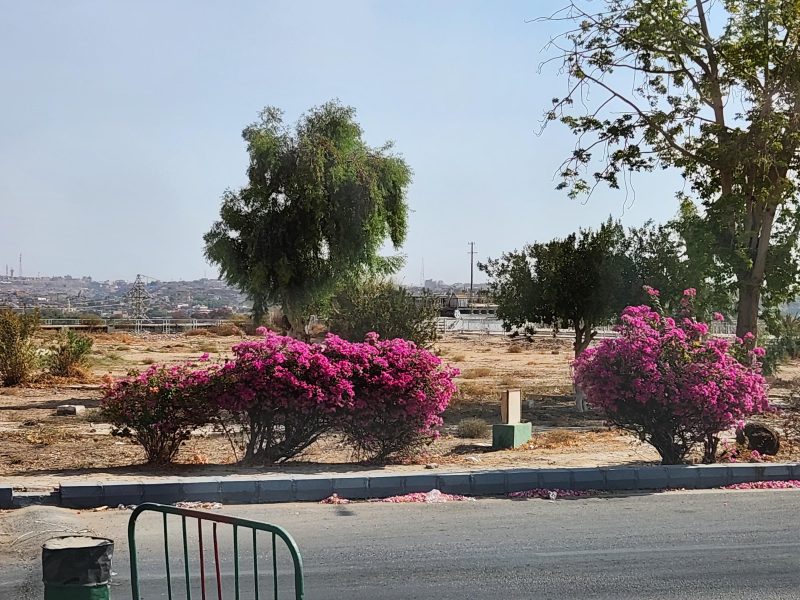
The Aswan High Dam, which formed Lake Nassar, is an engineering feat that protects the fertile land along the Nile River from flooding. At 300 miles long, Lake Nassar is the second-largest man-made lake in the world. The photo below shows Lake Nassar behind the Aswan High Dam. We were standing on the dam, so it was impossible to take a picture of it. The dam is made of granite, not concrete, so it’s technically a 365-foot-high pile of rocks. Granite from this area was shipped downriver from Aswan to Cairo to build the Great Pyramids of Giza.

The SUE (Soviet Union-Egypt) Friendship Monument (below) is near the dam. It represents the friendship between Egypt and Russia and commemorates Russia’s assistance in constructing the Aswan High Dam. Although the U.S. and some European countries contributed to the cost of the Aswan High Dam, Russia was by far the largest contributor. The monument’s shape suggests the lotus flower which closes at night and goes beneath the water, then rises again to open the next day.
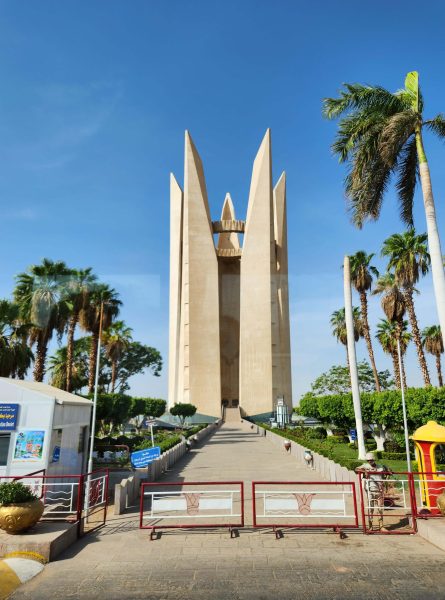
After visiting the dam, we went into downtown Aswan and stopped at a spice market. It smelled wonderful! I was surprised that Aswan appeared to be a cleaner, more dynamic, and more prosperous city than Cairo, Egypt’s capital city.
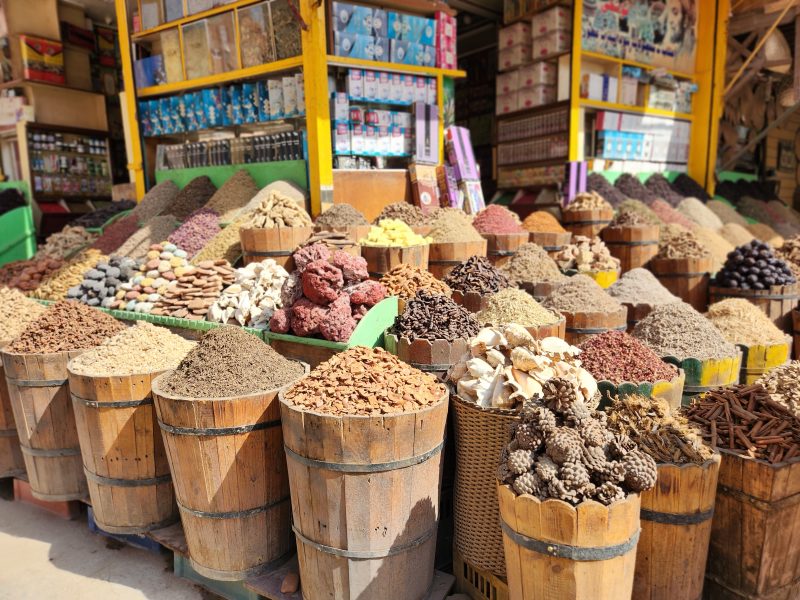
The indoor store must have offered every spice imaginable. The photo below shows about half of the store.

The main downtown market was the nicest and largest one we’ve seen so far (photo below). It was similar to an outdoor shopping mall in the U.S., but with Egyptian products and determined vendors. The market is two miles long, with shops on both sides of the walkway. The lattice top keeps the walkway (relatively) cool, making it pleasant to walk and browse. Of course, the vendors had to do their thing, so if we even glanced into their shops—and it’s hard to avoid looking—they rushed out to the walkway to offer us their wares. Unlike the foot vendors we’ve encountered, these shop vendors were less aggressive and did not follow us down the walkway—they needed to tend the goods in their shops.

After our time in the market, we sailed for an hour on the Nile River in a felucca—a wooden, single-sail boat like those in the photo below. While we were sailing, a half dozen boys 8-10 years old swam out to our boat on paddleboards, put their arms over the sides of the felucca to anchor themselves, and sang to us.
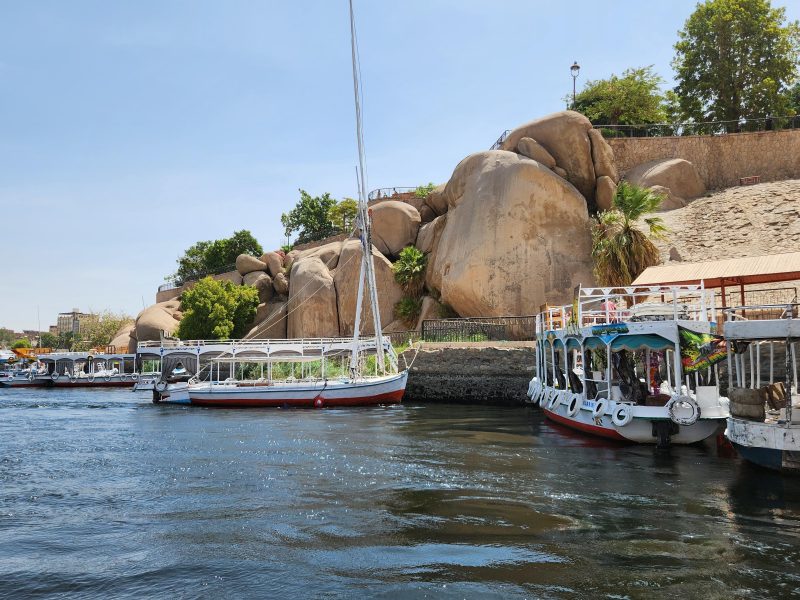
The awning over the boat and the river breeze through the open sides provided us with a lovely ride. Even here, we couldn’t escape the vendors. The table in the right center of the photo below has a cloth over it covering items that were later revealed for sale.
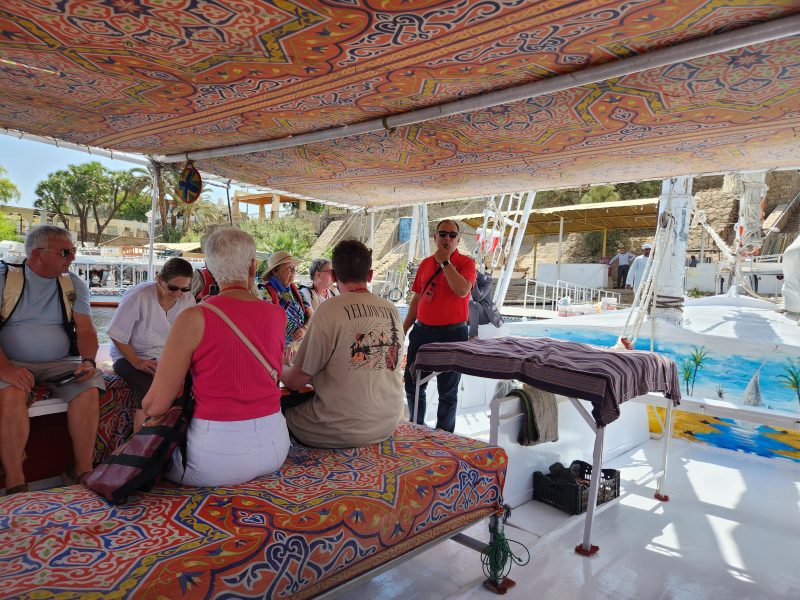
Our felucca passed the Old Cataract Hotel and Elephant Island, named for its rocks (below). Aswan is at the first of six cataracts (waterfalls) on the Nile River. The rocks on Elephant Island reminded me of those in Elephant Rocks State Park in Missouri.
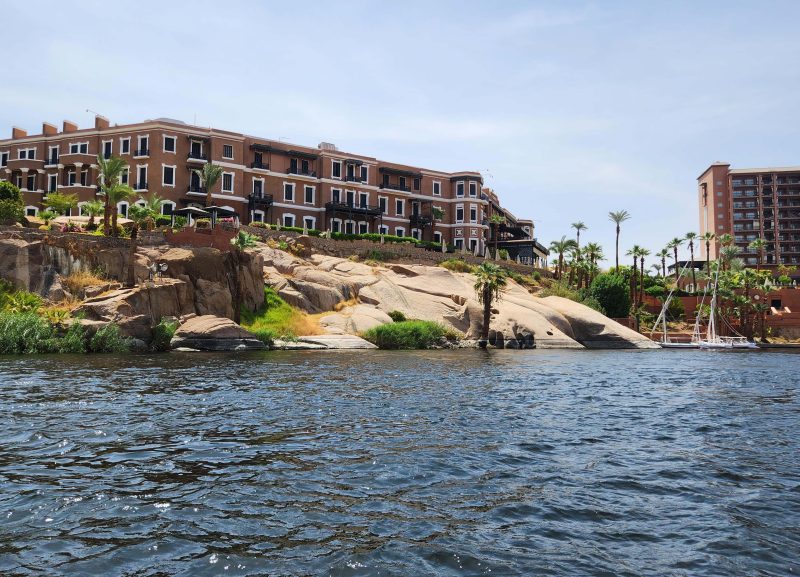
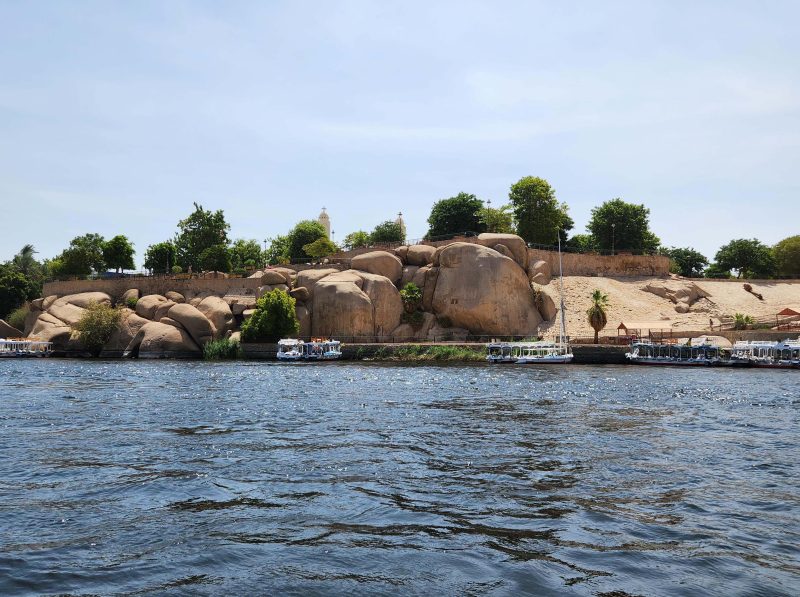
The Aswan dam was the southernmost point of our Nile River cruise so, after our felucca cruise, our ship turned back to the north, heading downstream toward Luxor. On the way to our Edfu stop, we passed the Kom Ombo Temple of Sobek. Say “Kom Ombo” aloud. Pronounce it the way it looks. Isn’t it fun? Doesn’t it sound African?
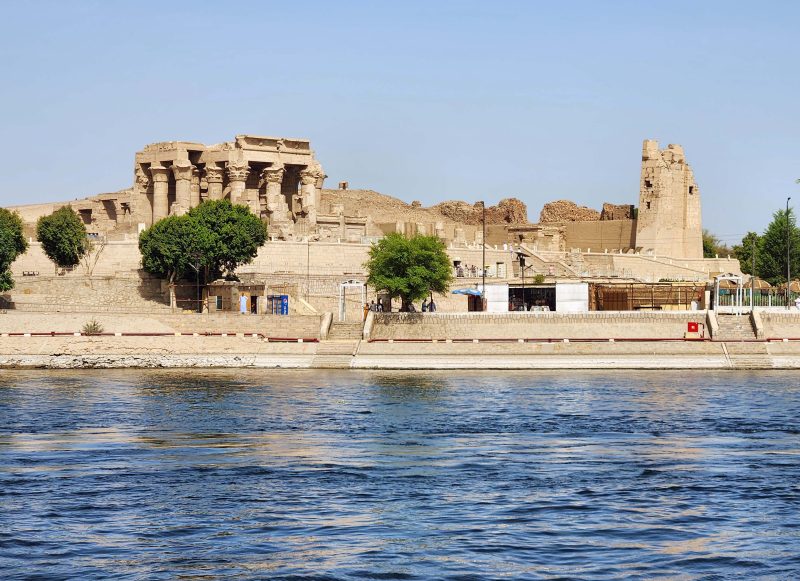
We docked in Kom Ombo that night, but did not go on any organized excursions in the city, so I took a picture at the dock where there was—what else?—a market.
